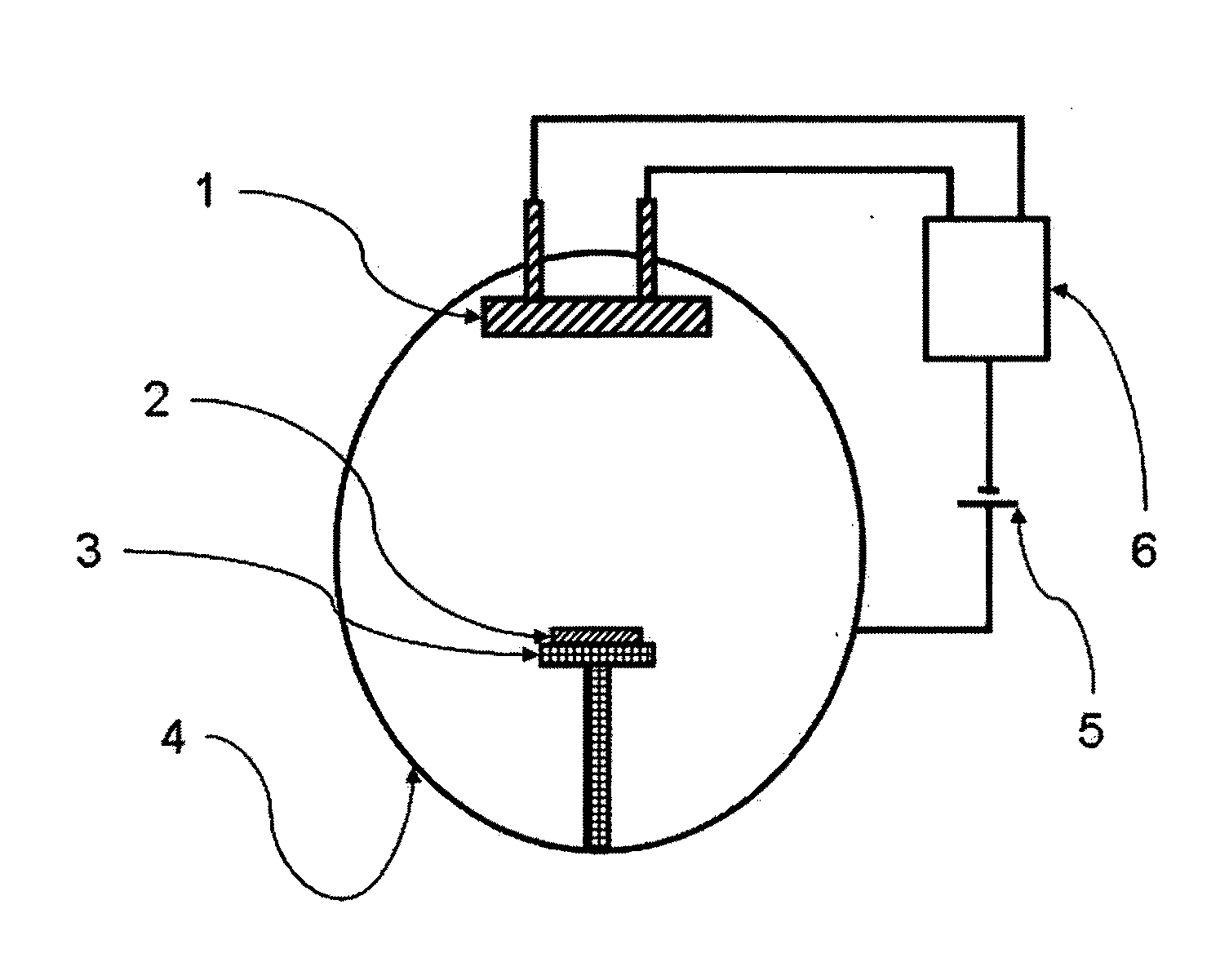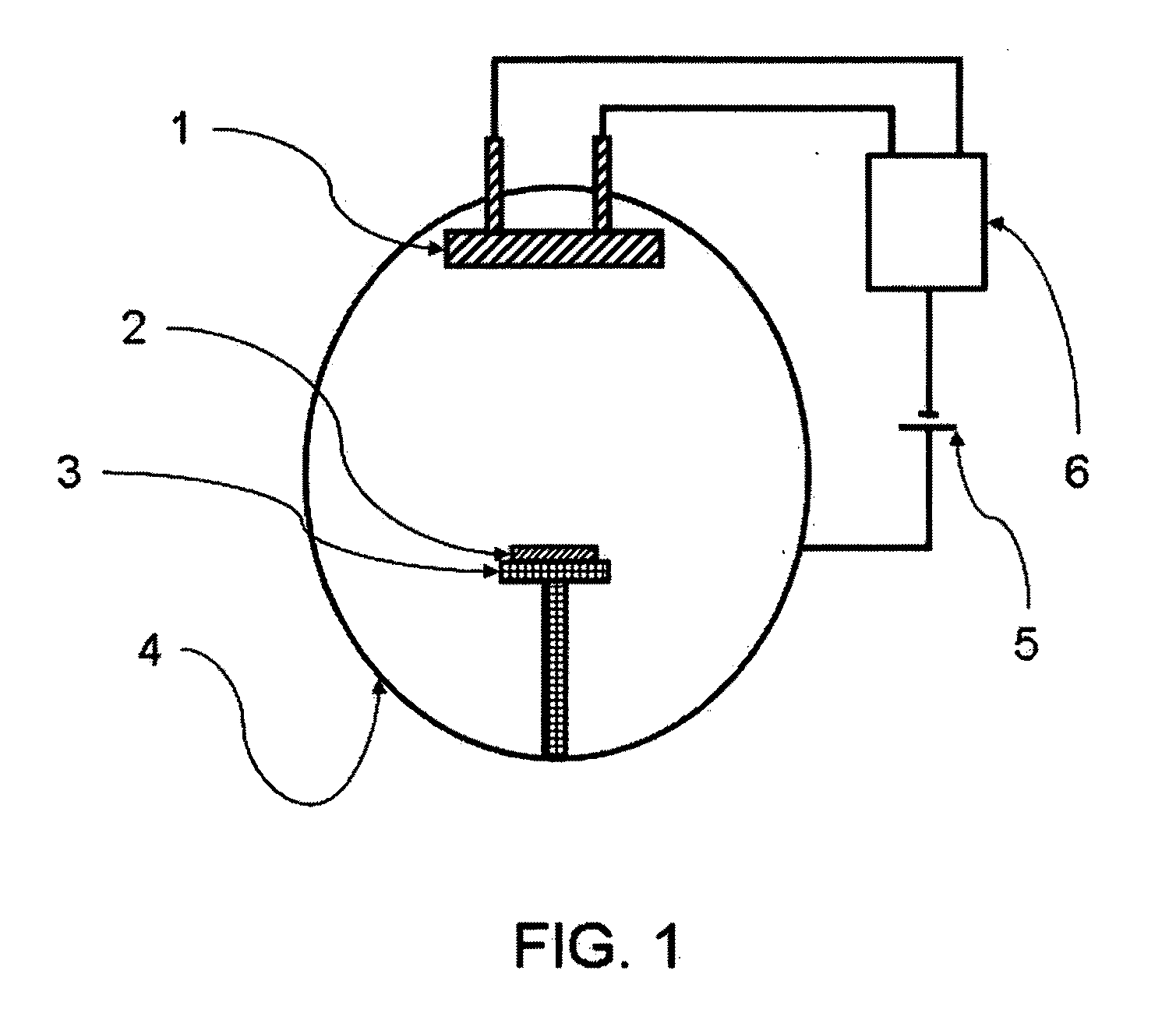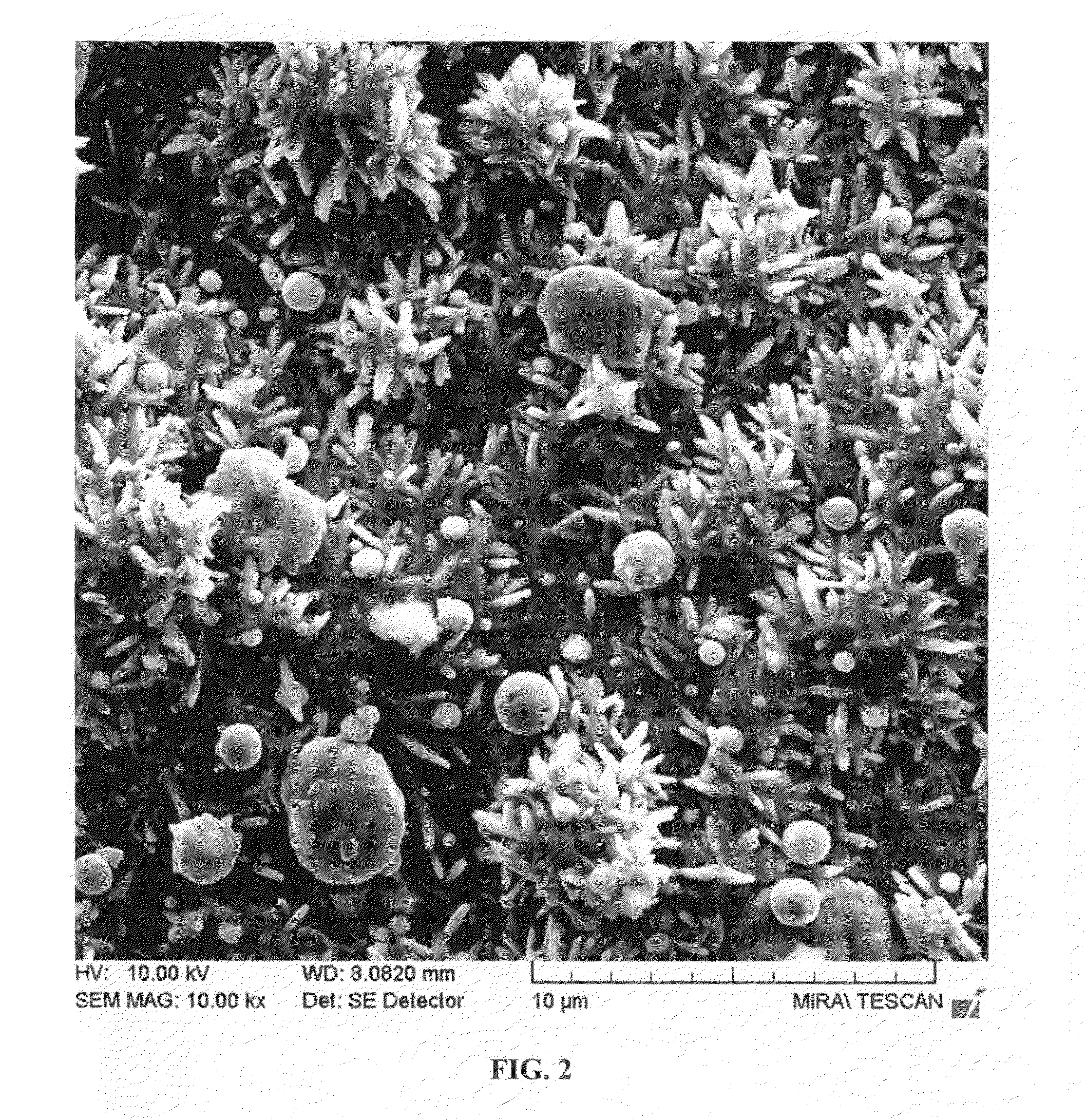Polymer coated spinulose metal surfaces
a technology of spinulose metal surfaces and polymer coatings, which is applied in the field of polymer coatings and films, can solve the problems that the effect of a polymer coating over the ag/ago was not necessarily expected to act as a suitable controlled release coating, and achieves the effects of simple dipping, rapid and cost-effective preparation, and resistance to shear and thermal peeling
- Summary
- Abstract
- Description
- Claims
- Application Information
AI Technical Summary
Benefits of technology
Problems solved by technology
Method used
Image
Examples
example 1
Spinulose Titanium or Zirconium
[0058]Nanostructured spinulose titanium or zirconium surfaces can be produced by a modified cyclic plasma arc deposition procedure termed nano plasma deposition (NPD). The apparatus for producing the metal ion plasmas is shown in FIG. 1.
[0059]The selected substrate material was ultrasonically cleaned before deposition in detergent (ChemCrest #275 at 160° F.), rinsed in deionized water and dried in hot air.
[0060]The clean substrate was then placed in the chamber and exposed to nano-plasma deposition (NPD) using the special deposition conditions described. The cathode was commercially pure titanium cathode (grade 2) or zirconium 7021. The substrates were mounted in the vacuum chamber at distances from 6 to 28 in from the cathode (measured from the centre of the cathode). The angle between the cathode surface normal and a line from the centre of the cathode to the substrate, θc, was varied in the range 0-80°. The angle between the depositing flux and the ...
example 2
Nano Plasma Deposition of Silver / Silver Oxide
[0066]Ionic Plasma Deposition (IPD), similar to the process for NPD, creates a highly energized plasma from a target material, typically solid metal, from a cathodic arc discharge. An arc is struck on the metal and the high power density on the arc vaporizes and ionizes the metal, resulting in a plasma which sustains the arc because the metal vapor itself is ionized, rather than an ambient gas.
[0067]An apparatus suitable for controlling deposition of a silver / silver oxide plasma ejected from a silver cathodic arc target source 1 onto a substrate 2 is shown in FIG. 1 within the vacuum chamber 4 or by a power supply 5 to the target and adjustment of arc speed 6. The closer a substrate is to the arc source, the larger and more densely packed will be the particles deposited on the substrate.
[0068]A 4% w / v poly-L-lactic acid polymer solution in chloroform was cast over the surface of a Ag / AgO coated smooth titanium substrate from a pipette. Th...
example 4
Polymer Film on Ag / AgO Coated Spinulose Titanium
[0069]A 4% w / v poly-L-lactic acid polymer solution in chloroform was cast from a pipette over Ag / AgO deposited onto a spinulose titanium surface. The polymer coating was strongly adherent to the underlying silver spinulose surface and was not easily peeled from the surface. Adhesion was tested as described in Example 5.
PUM
| Property | Measurement | Unit |
|---|---|---|
| Surface | aaaaa | aaaaa |
| Antimicrobial properties | aaaaa | aaaaa |
| Biocompatibility | aaaaa | aaaaa |
Abstract
Description
Claims
Application Information
 Login to View More
Login to View More - R&D
- Intellectual Property
- Life Sciences
- Materials
- Tech Scout
- Unparalleled Data Quality
- Higher Quality Content
- 60% Fewer Hallucinations
Browse by: Latest US Patents, China's latest patents, Technical Efficacy Thesaurus, Application Domain, Technology Topic, Popular Technical Reports.
© 2025 PatSnap. All rights reserved.Legal|Privacy policy|Modern Slavery Act Transparency Statement|Sitemap|About US| Contact US: help@patsnap.com



